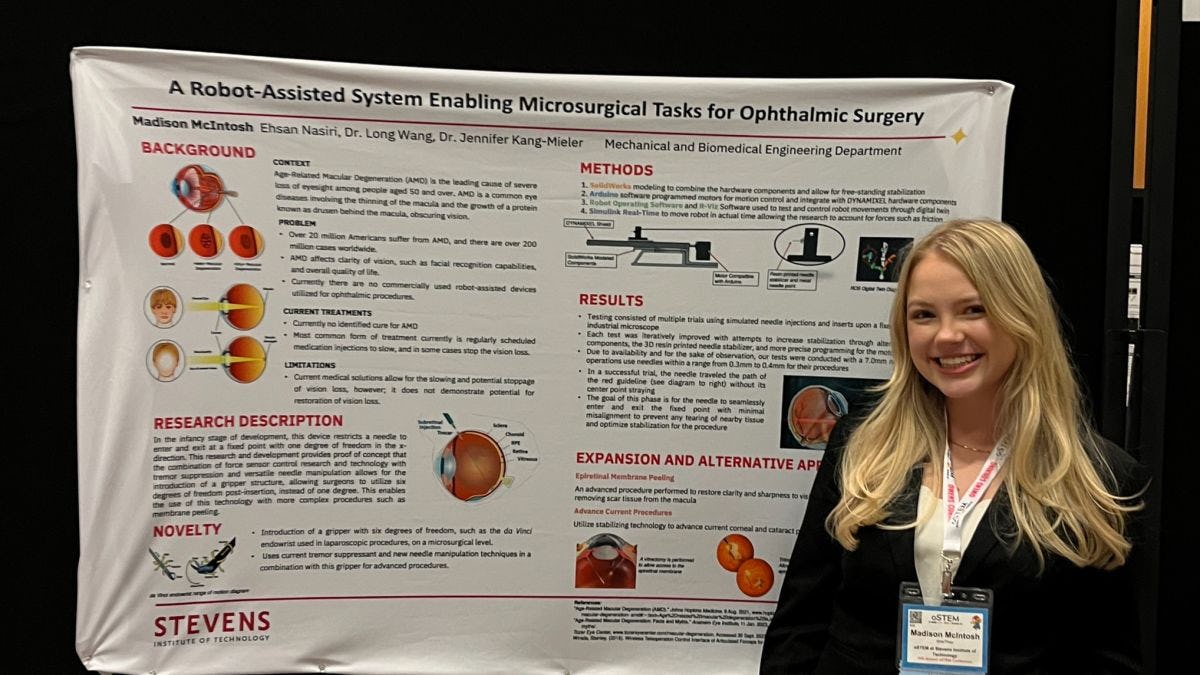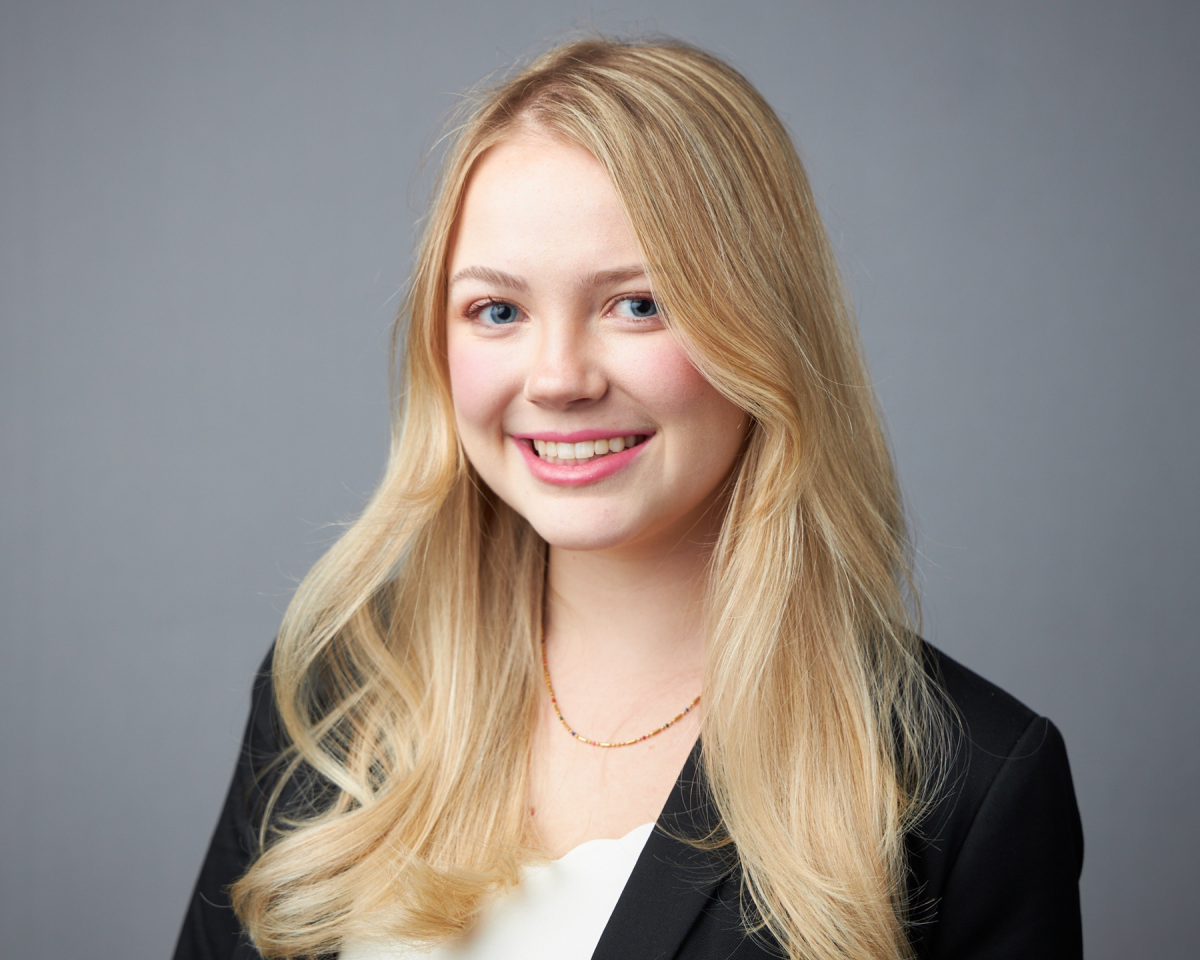Student Q&A: Biomedical Engineering Student Awarded Second Place in the Summer Scholars Innovation & Entrepreneurship Pitch Competition
Madison McIntosh ’25 applies her passions in biomedical engineering to create an award-winning robotic microsurgery prototype
Over the summer of 2023, Stevens Institute of Technology junior Madison McIntosh ‘25 participated in the Innovation and Entrepreneurship Summer Scholars Research Program (I&E) research program under the guidance of Long Wang, assistant professor of mechanical engineering; Jennifer Kang-Mieler, professor and chair of the Department of Biomedical Engineering; and Ehsan Nasiri, Ph.D. student of mechanical engineering. Every year, the program holds an elevator pitch competition, allowing student-researchers to showcase their research, as well as its market potential and expandability. In using her skills across biomedical and mechanical engineering, McIntosh was awarded the $1,000 second-place prize in the competition.
McIntosh joins Sophia Donskoy ’26, a second-year biomedical engineering student, to discuss the experience.
Donskoy: Can you describe the research you worked on in the I&E program?
McIntosh: The I&E research program gave me the opportunity to work in the Advanced Robotics Manipulators Laboratory of Long Wang. There, the objective was to design a robot system with a needle that can enter and exit the eye at a fixed point to allow for a subretinal injection of stem cells specialized to restore the vision of patients with age-related macular degeneration. With rapid prototyping, I used computer automated design (CAD) and robot programming to display the device’s proof of concept.
D: What did you find to be most interesting about the work you did?
M: Up until the summer of last year, I worked as a medical assistant, which piqued my interests in robotics and minimally invasive procedures. I felt very lucky to have taken part in this research because, as much as I enjoy engineering, I appreciate it the most when I am able to see the fruition of my work and understand its impact. Additionally, the ultimate goal of such research is to facilitate expansions in alternative applications in surgery, such as creating an operating system that can perform membrane-peeling procedures on a microsurgical scale.
D: What did you find to be the most challenging aspect of your project?
M: The main challenge I faced was figuring out the biomedical and clinical applications on my own while primarily receiving guidance that pertained to mechanical engineering exclusively. However, the experience of working in a mechanical engineering lab was beneficial to my success as a biomedical engineer because it had given me the opportunity to develop a solid understanding of the mechanical components that present in biomedical engineering.
D: How were you able to apply your Stevens education and resources to your research?
M: The unique hands-on experience that Stevens offers in the engineering curriculum is certainly the most invaluable part of my education. Upon taking the first engineering design class during my freshman year at Stevens, I was instantly drawn to SolidWorks and CAD. In later engineering classes, such as “Statics and Introduction to Engineering Mechanics” and “Design of Dynamical Systems,” I always pushed myself toward the challenging route in achieving a common objective, which vastly expanded my ability and understanding of the software that is commonly used in the engineering space.
D: What advice would you give to Stevens students who are interested in opportunities such as I&E?
M: My greatest piece of advice for Stevens students is to prioritize making connections with professors. Dr. Wang was the first professor I had on my first day of freshman year at Stevens, so making the connection with him from the beginning was very valuable when it became time to search for research opportunities. Overall, it took several months to find an opportunity that I ended up being more than satisfied with, so my recommendation is to keep searching and not hesitate to reach out to professors and mentors.
D: What are your plans after graduation?
M: Following my undergraduate education, I hope to pursue a master’s degree through Stevens’ accelerated master’s program. Having experience in both lab and clinical settings, I look forward to transitioning into the industry, ideally pursuing clinical engineering. I hope to then potentially return to education for a Ph.D. in biomedical engineering.

